Did you know that white colored vegetables are rich in phytonutrients and vitamins? Here are 19 healthy white vegetables you have to try!
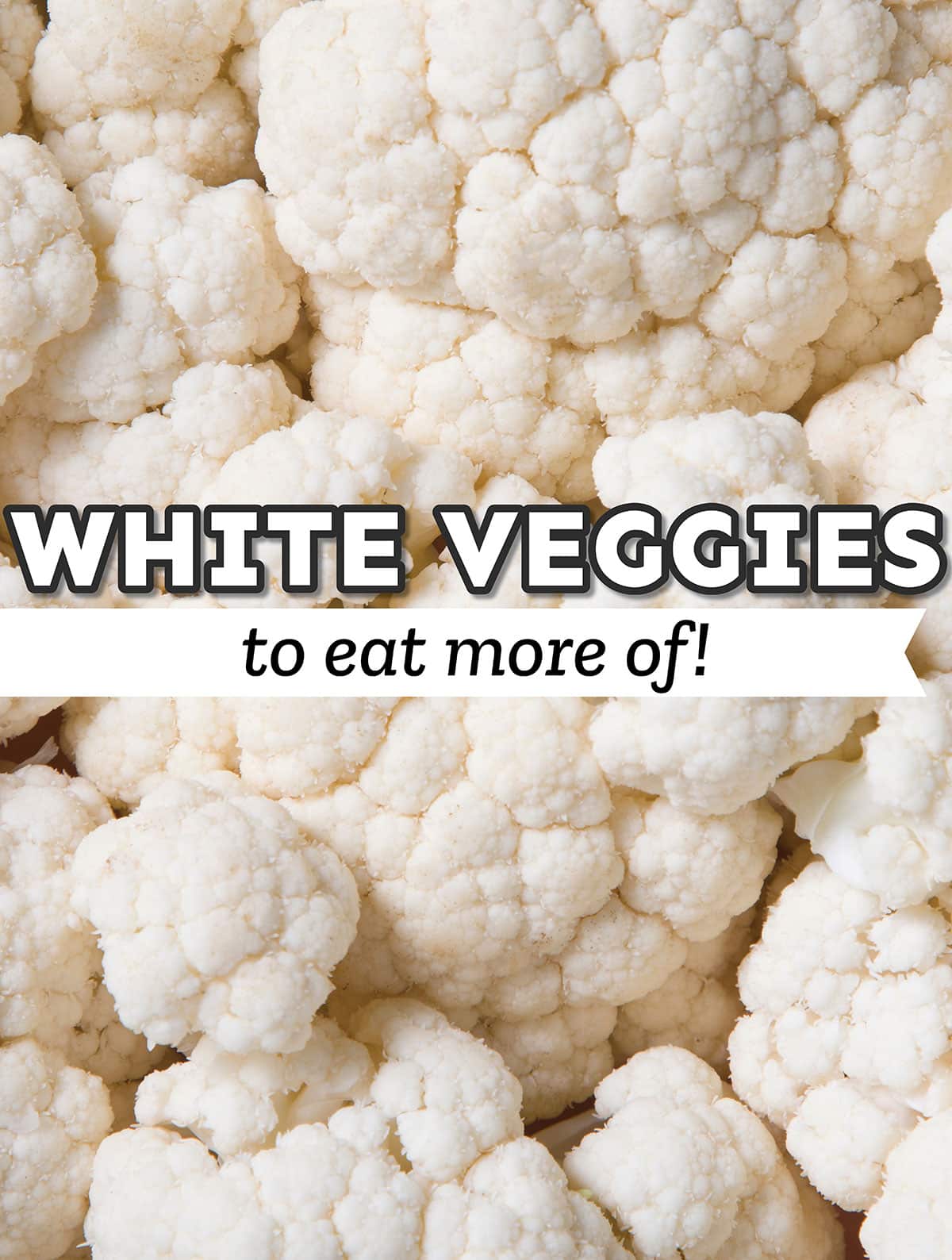
Are you looking for a specific white vegetable? Here are 19 white vegetables along with some helpful information about each. So if you are just trying to add some white veggies to your diet for their well known antioxidant contents, or perhaps just looking to add variety to your cooking, here are a bunch for you to discover!
White fruits and vegetables may not be colorful, but they are nutritionally important foods to include in a healthy diet.
Are White Vegetables Healthy?
White vegetables reinforce the mantra “eat your colors”. They tend to be decent sources of vitamin C, dietary fiber, potassium, and most other essential nutrients. They do not, however, contain meaningful amounts of Vitamin A. Eat a variety of colored fruits and vegetables for optimum nutrition!
Veggie Trivia!
Which of these white vegetables has the most protein in a 3.5 oz raw serving? (Scroll to the bottom of this post for the answer!)
a. Parsnips
b. Mushrooms
c. Cauliflower
d. White Corn
White Vegetables To Try!
- Baby Boo Pumpkin
- Cannellini Bean
- Carnival Squash
- Cauliflower
- Fayot Bean
- Gigante Bean
- Great Northern Bean
- Kohlrabi
- Lumina Pumpkin
- Mushrooms
- Onion
- Parsnip
- Potato
- Soybean
- Turnip
- White 7 Pot Pepper
- White Asparagus
- White Bell Pepper
- White Corn
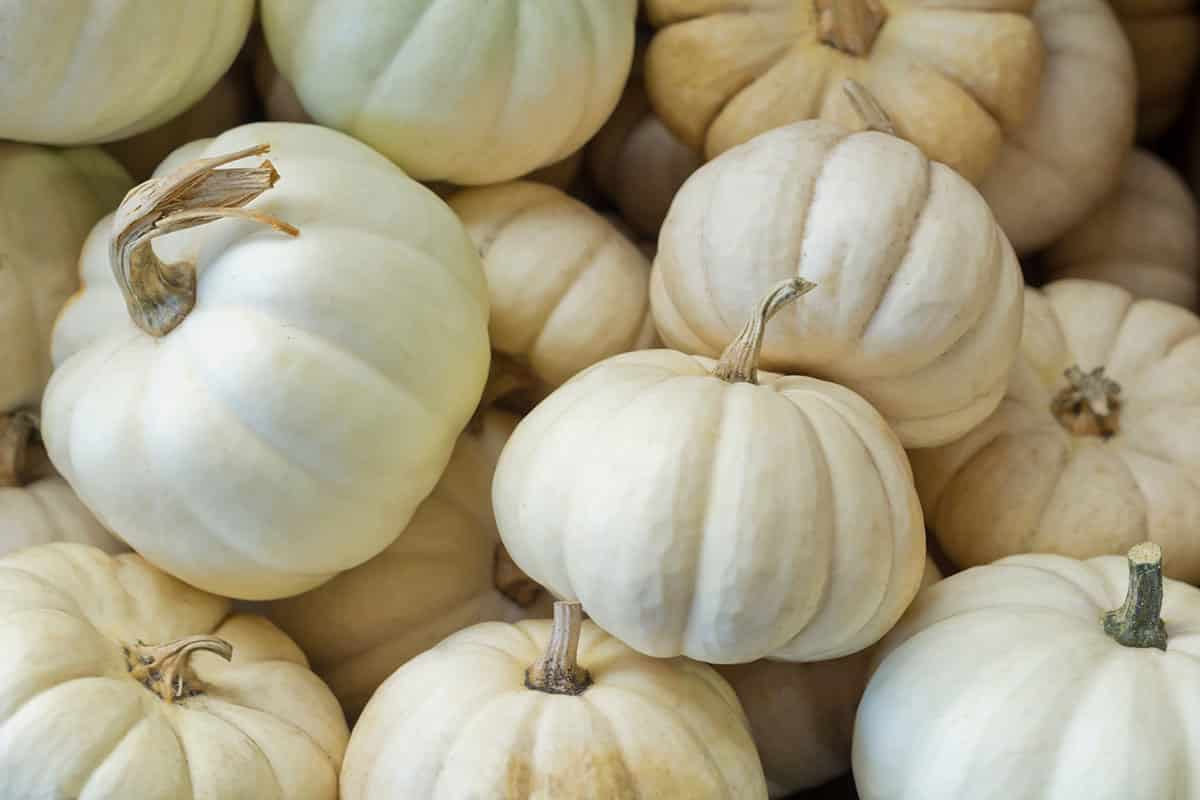
Baby Boo Pumpkin
Baby Boo Pumpkins are actually a variety of Acorn Squash. These are the little white squash often used in Autumn displays, but when you are done displaying them in the Fall put them to real use in the kitchen as you would acorn squash. You can roast, steam, or microwave them for use in a variety of acorn squash recipes. The shape of the baby boo makes them difficult to peel. Fortunately, the peel is perfectly edible when cooked! If the texture isn’t your thing, simply scrape the cooked flesh out with a spoon. That peel, however, is loaded with fiber. For more on the nutritional contents of acorn squash as well as tips on how to roast, steam, or sauté squash them check out Acorn Squash 101 Nutrition + How to Cook It 4 Ways! I do have to say , however, my hands down favorite for taste and presentation is either Stuffed Acorn Squash or in this Harvest Bowl.
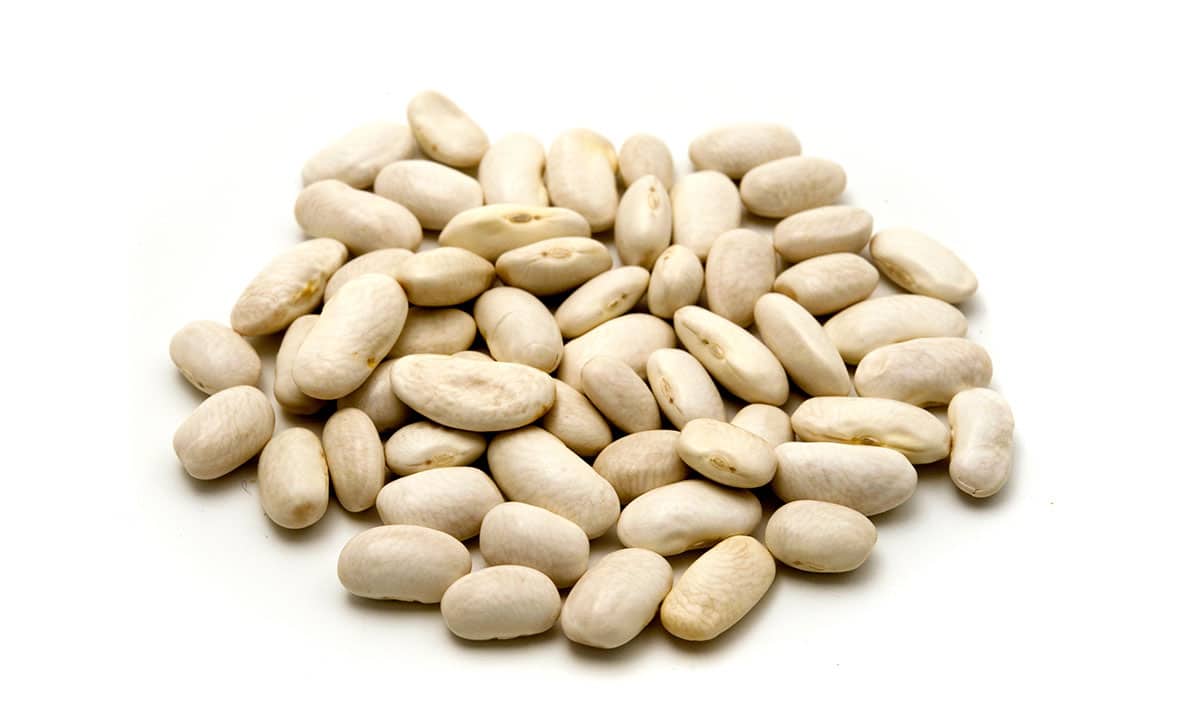
Cannellini Bean
Cannellini Beans are also called White Kidney Beans. They are a large ivory colored Italian bean you can use in any recipe that calls for white beans, or as a substitute for navy beans. Our favorite use is in this Vegetarian White Bean Chili.
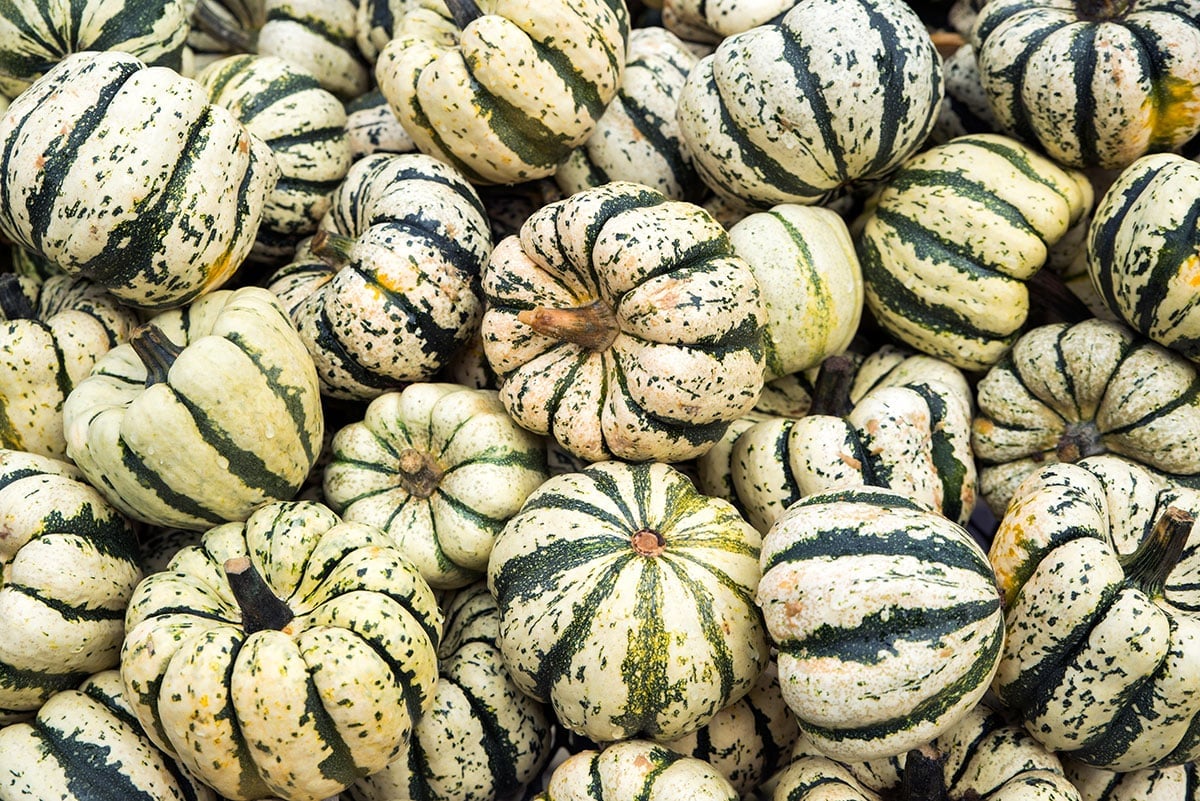
Carnival Squash
Carnival Squash are small white pumpkins that have a rich orange flesh and are great for baking. So, by all means, buy them to decorate, but as autumn ends puree these little gems and get cooking.
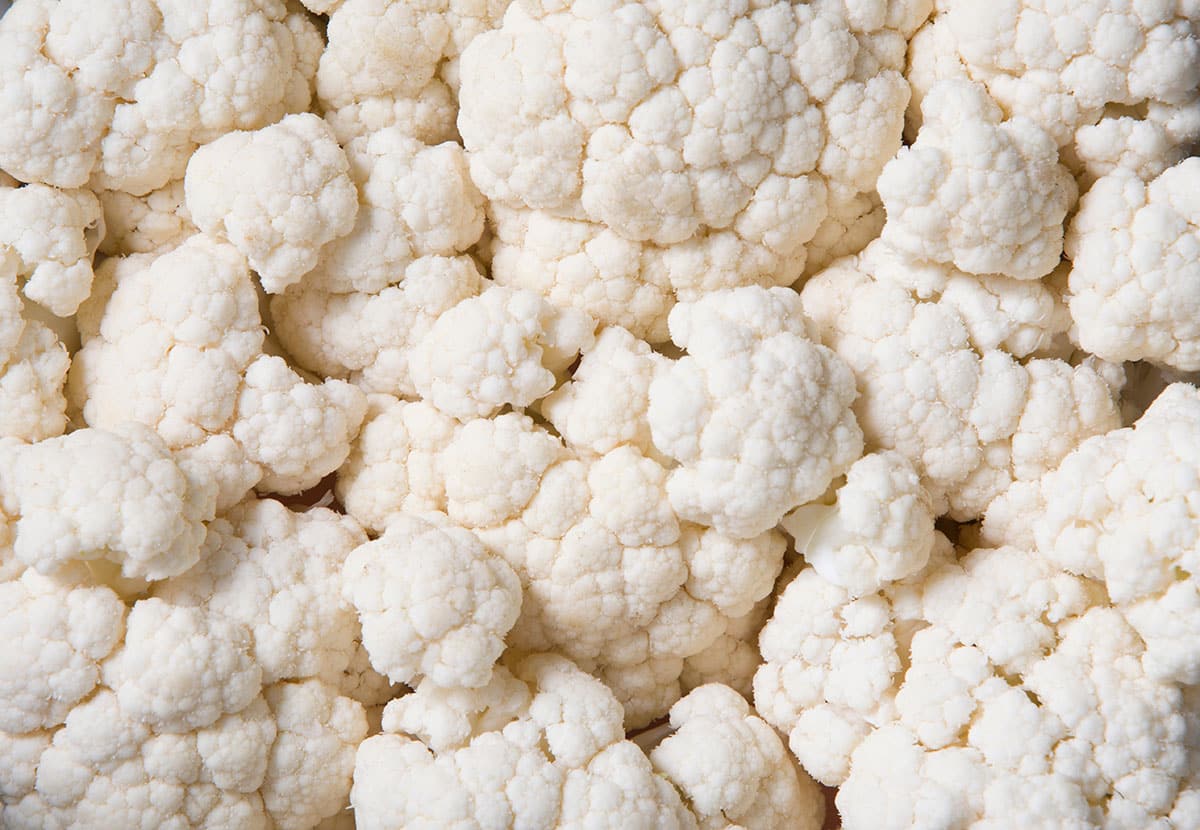
Cauliflower
Cauliflower is in the same family as cabbage, broccoli, and brussels sprouts. The parts we eat of all these veggies are actually flower buds! Cauliflower is a high fiber low calorie veggie with only 7 calories per ounce, and there is so much you can do with it. If you want to try some new ways to use cauliflower check out 17 Creative Cauliflower Recipes, and go here if you want some new Vegan Cauliflower Recipes. Cauliflower isn’t just for savory recipes. It can also be used in a decadent but healthy Hidden Cauliflower Strawberry Banana Smoothie.
Cauliflower can also come in colors other than white. If you want to add some color variation to your recipes look for these at your grocery or international market:
- Orange: Sometimes called Cheddar Cauliflower, it is similar to the white but not quite as hard and with 25% more vitamin A!
- Green: Also known as Romanesco or “broccocauli”. With its mesmerizing spirals this is one of the most unique vegetables you can eat.
- Purple: Similar to the white but loaded with antioxidant anthocyanins, the healthy phytochemical responsible for the purple color.
If you want to know more about how to select, store, and use cauliflower check out our Cauliflower 101 Guide.
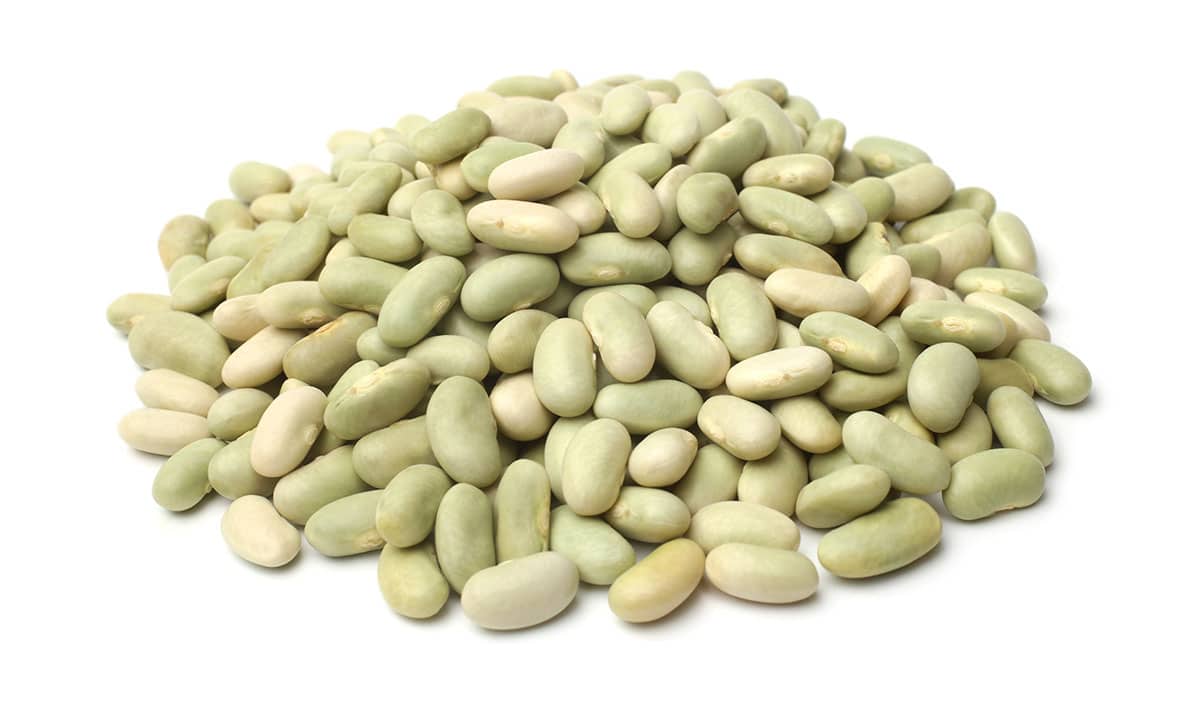
Fayot Bean
Fayot Beans or Flageolet Beans are kidney beans harvested early. They can be white or green, and here in the USA are grown in California. Before cooking you need to soak these beans preferably overnight. You can also just buy them canned and skip this step. Common uses include in stews, salads, and casseroles.
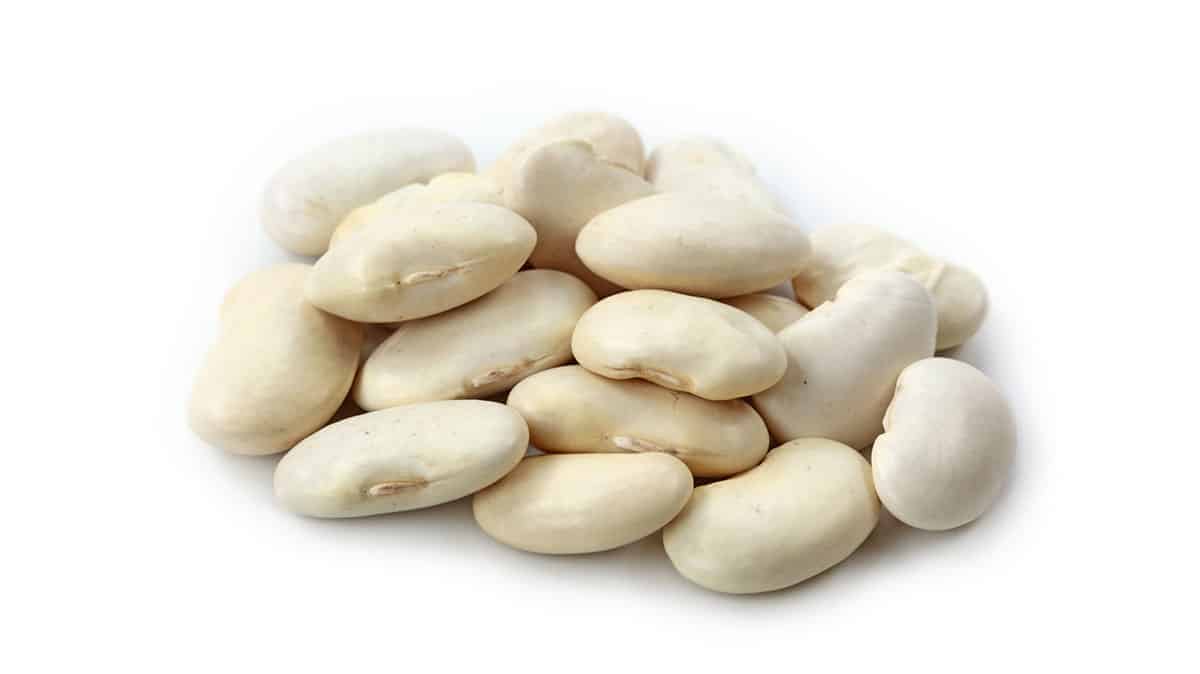
Gigante Bean
Gigante Beans are large white runner beans that derive their name from their size (“gigante” is Greek for gigantic). They are extensively used in Greek cuisine, and are popular for their sweet mild taste. Like so many other beans, they are low in calories, high in fiber, and provide a variety of vitamins and micronutrients.
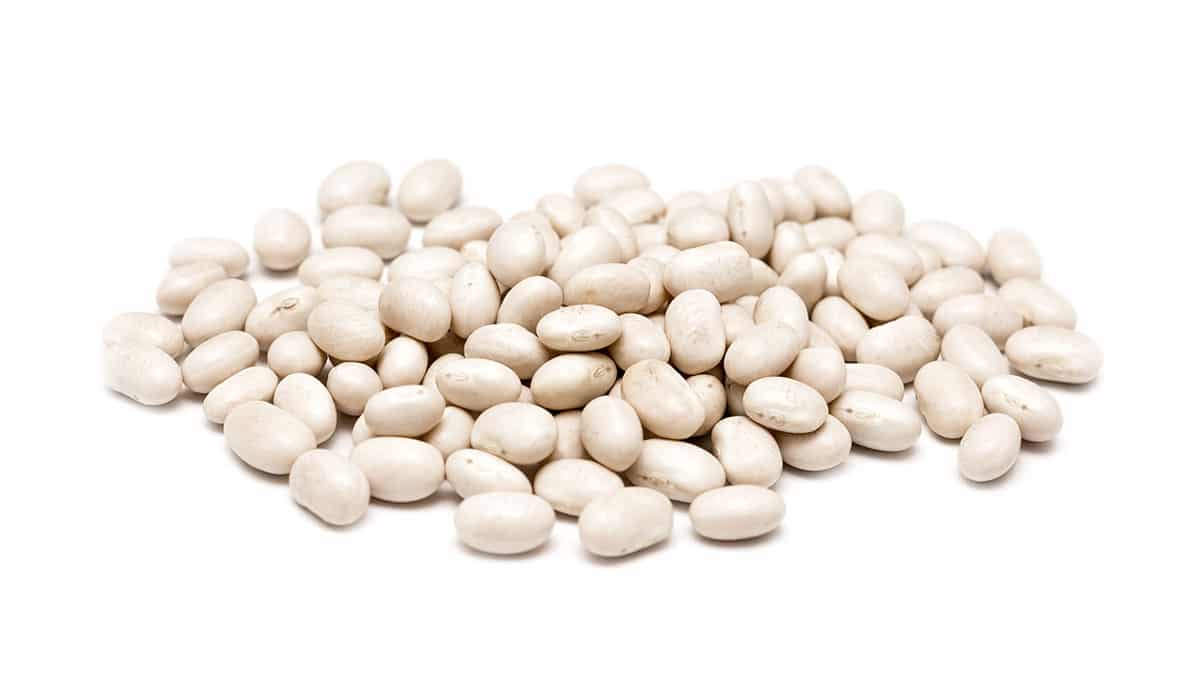
Great Northern Bean
Great Northern Beans are a white bean similar to cannellini beans. You can substitute these for any recipe calling for cannellini beans like our favorite Vegetarian White Bean Chili.They are commonly used in soups, and have a wonderful nutrition profile with a 100g (about 3.5 ounce) cooked serving providing 7g of fiber and 8g of protein.
Kohlrabi
Kohlrabi is also called the German turnip cabbage. It is of the same species as cabbage, broccoli, cauliflower, and brussels sprouts. It is quite popular in Germany where it is eaten both raw or cooked. Raw the white firm veggie adds crunch to a salad.
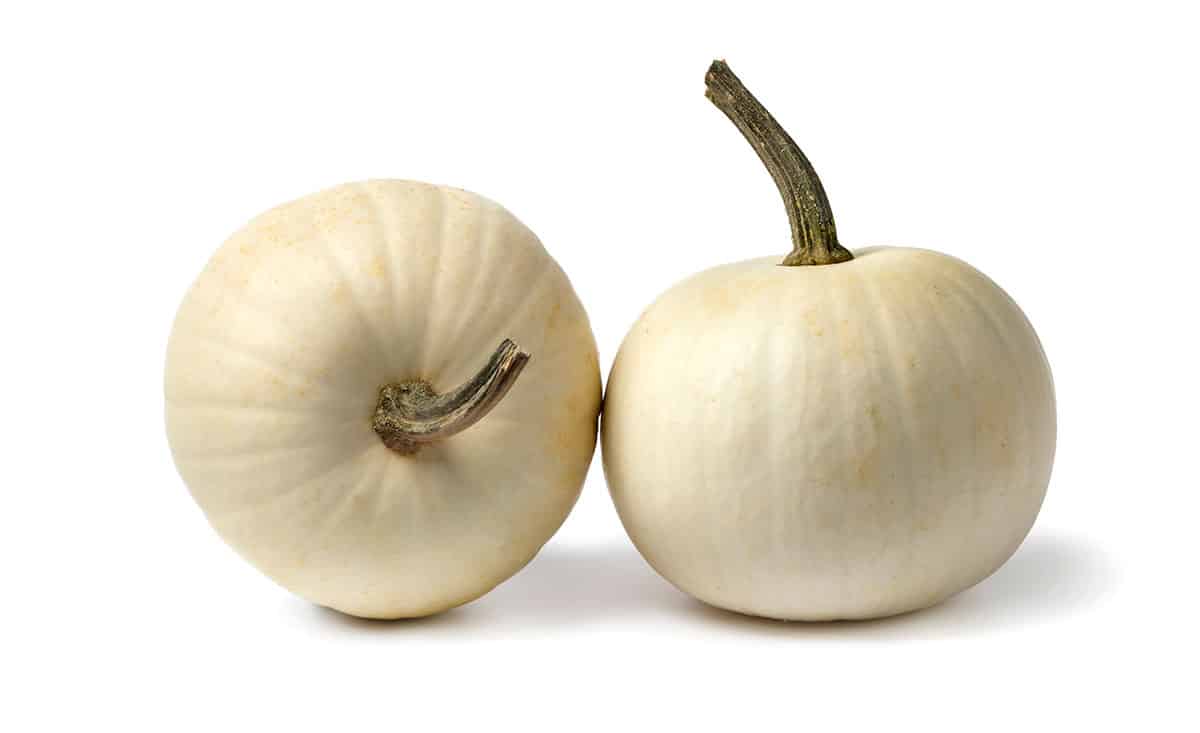
Lumina Pumpkin
Lumina Pumpkins are also called white pumpkins, full moon, or ghost pumpkins. They have smooth skins and weigh 10-15 pounds. The lumina pumpkin makes great Fall décor, but this pumpkin is perfect for both decoration and cooking. With an earthy flavor, white pumpkins are culinarily similar to butternut squash. You can use them in a number of ways from salad, soup, and casserole to waffles, muffins, and quesadillas! So put this out on your front porch in October, and use it as a butternut squash substitute in November. 10 Vegetarian Butternut Squash Recipes You’ll LOVE.
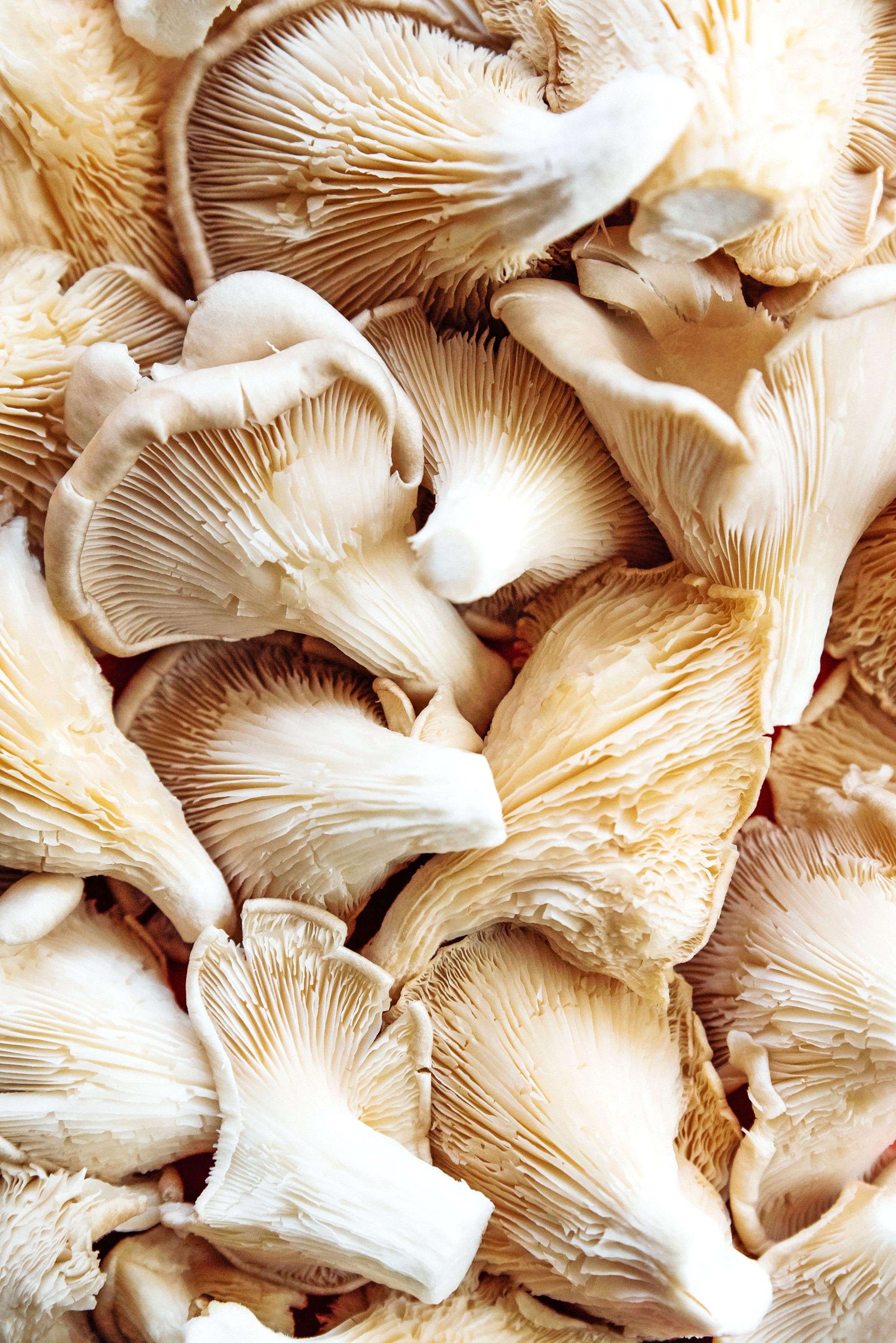
Mushrooms
Mushrooms grow commercially and in the wild almost worldwide. There are hundreds of types and variations. We provide information on 29 Types of Mushrooms here if you want to dive further, and recently published a How to Cut Mushrooms guide. Mushrooms are more nutritious than many people known with one of the highest protein contents per calorie of all vegetables. They are great in traditional recipes like these Vegetarian Stuffed Mushrooms, but also make a great meat substitute. If that peaks your interest, try this Mushroom Pulled Pork Recipe.
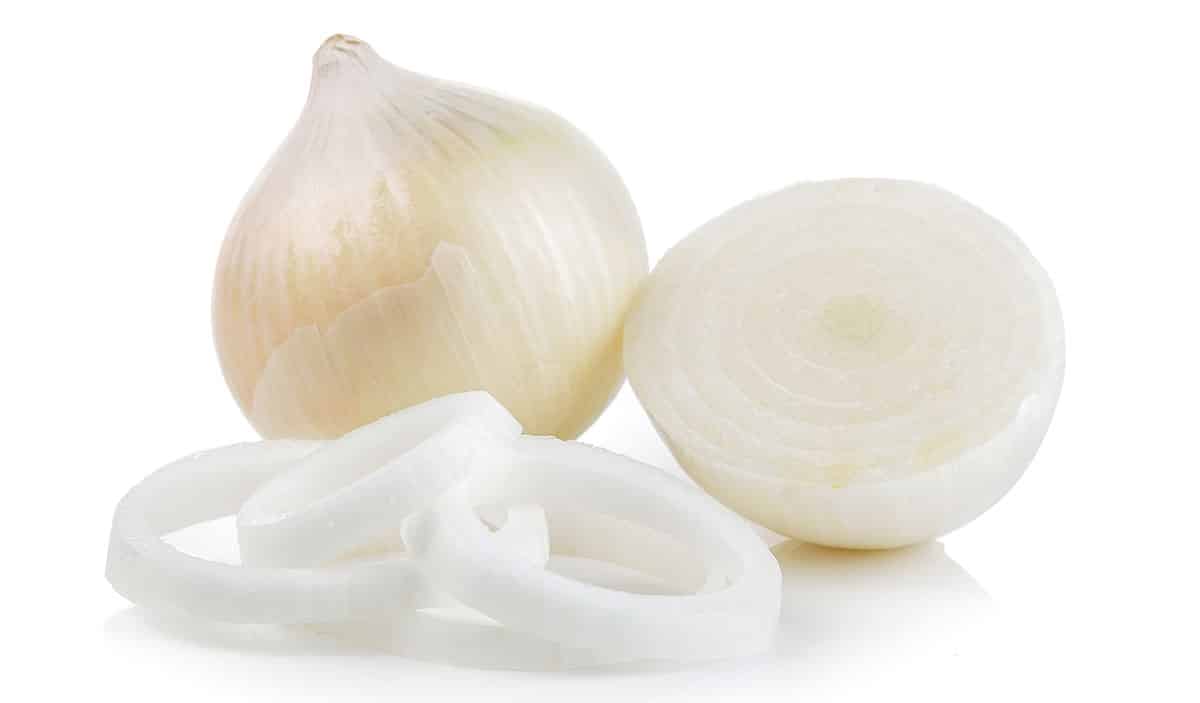
Onion
Most food historians (ya that really is a job or at least a study) believe that onions originated somewhere in Central Asia. Some narrow the region down to Iran or Pakistan. Evidence suggests that our ancestors ate wild onions long before recorded history, likely as much as 7,000 years ago. Most are white, green, yellow, or red though purple is also common. We won’t try to go through the myriad varieties here, but if you are interested we published a guide on 23 Types of Onions as well as a tutorial on How to Chop Onions Ideally Without Crying. Americans eat an average of 20 pounds of onions a year up from only 12 pounds forty years ago.
Parsnip
Parsnips are a root vegetable related to the carrot. It is a white taproot native to Eurasia. We believe it was first cultivated by the Romans perhaps 2,000 years ago, but was likely eaten well before then. Before cane sugar parsnip was used as a sweetener as it does have a sweet flavor, and can be eaten raw or cooked. They are a healthy choice as reflected in the nutritional chart at the top of this article. If you haven’t used parsnips before, give this Parsnip White Bean Soup a try on a chilly day.
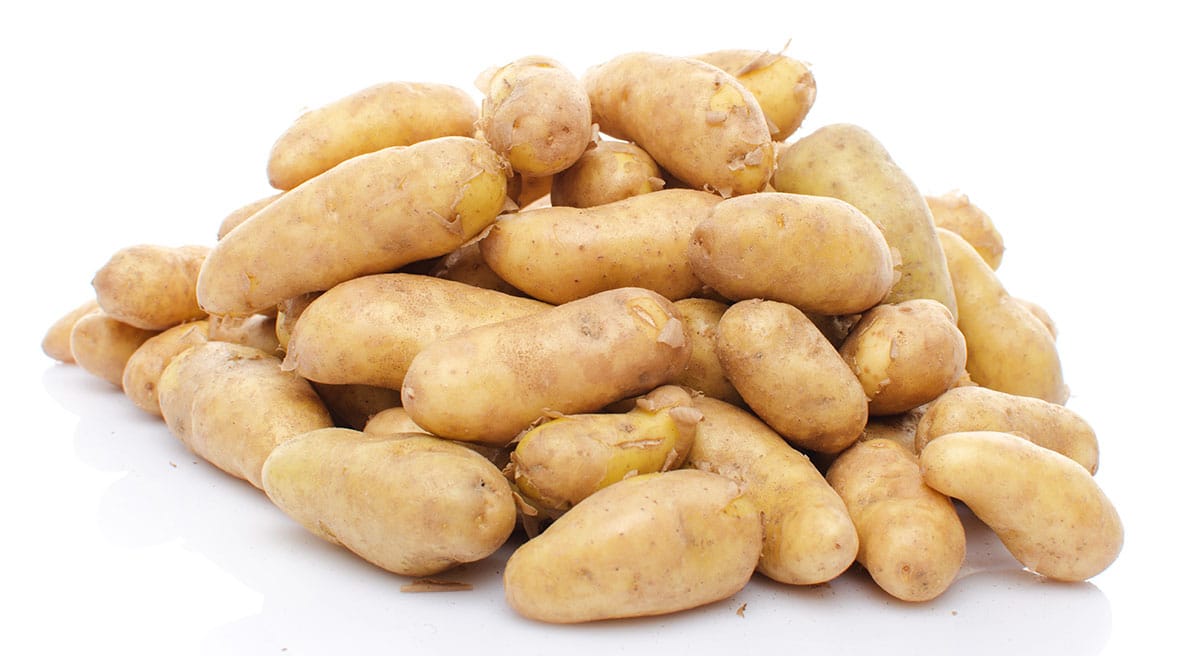
Potato
Americans eat over 110 pounds of spuds a year, but the humble potato has been a world-wide staple for thousands of years. Potatoes are native to the Andes Mountains of Peru, and were brought to Europe by early Spanish explorers. They are currently the fifth most important crop in the world. There are over 200 varieties of potatoes and we won’t expand on any of them here. If, however, you want to know a whole lot more, check out our 29 Types of Potatoes Guide or just get your favorite potato variety and try these Rosemary Roasted Potatoes.
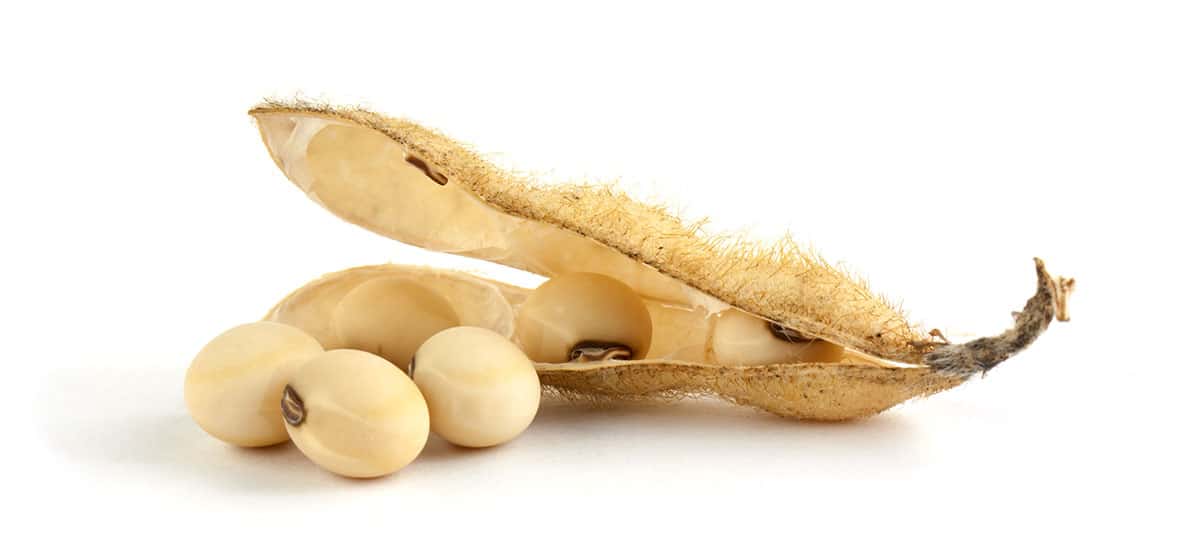
Soybean
Soybeans are a type of bean native to East Asia with many uses and great nutritional value. While soy “milk” has become popular in the US lately, soybean’s super-power is as a meat substitute such as tempeh or tofu.
Tofu is created by adding calcium sulfate to soybeans causing them to clump. The coagulated clumps are then pressed together to form the classic tofu cube. The amount of water pressed from the cube determines the firmness of the tofu. For a whole lot more on tofu check out Tofu 101: Health Benefits, Varieties, and Cooking! If you are skeptical about the meat substitute try any of these 10 Tofu Recipes kids Will Love.
Tempeh originated in Indonesia, and is made by pressing together a block of soy beans then fermenting it. What Is Tempeh (And How Do You Cook With It?).
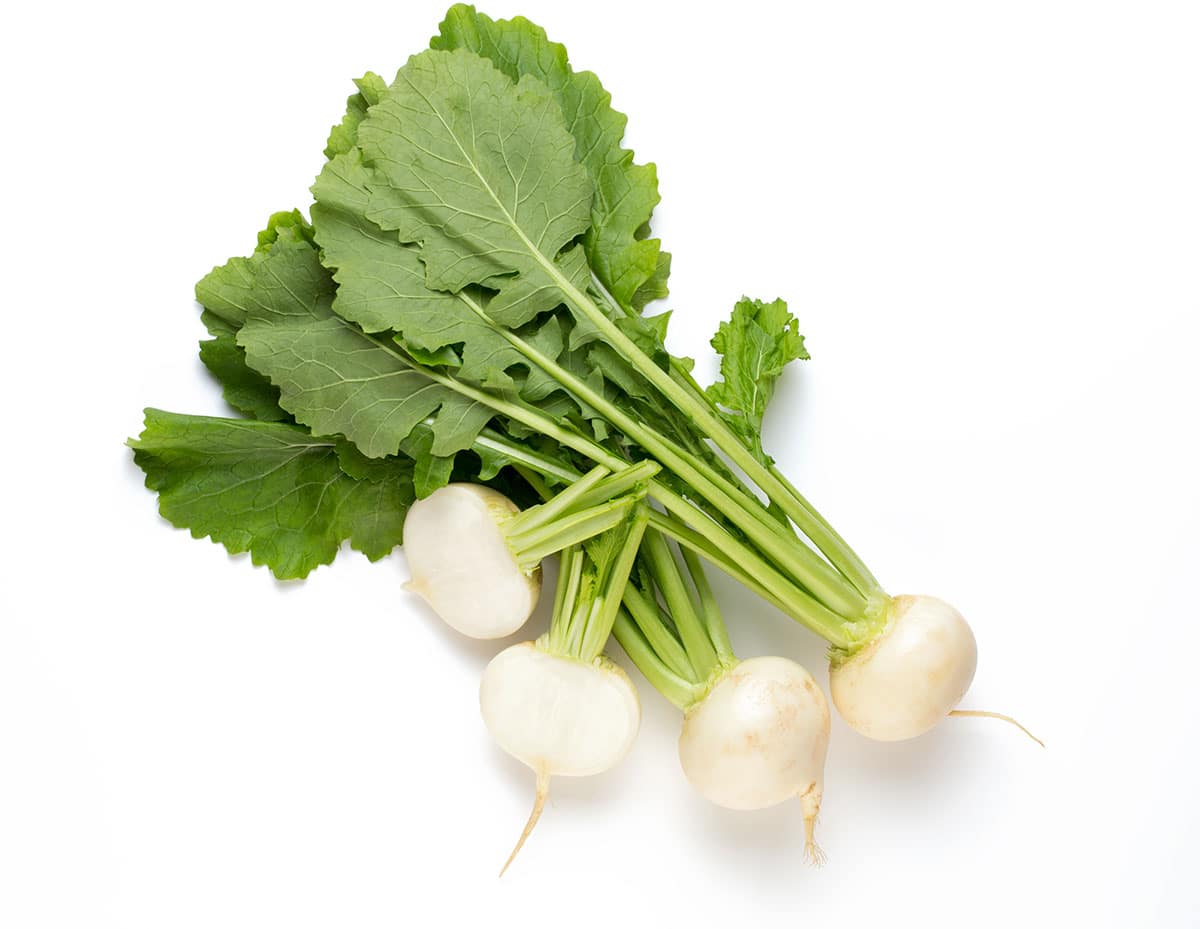
Turnip
Turnips are white and purple on the outside and quite white on the inside. They taste somewhat like potatoes, or perhaps like a potato & cabbage combination. They are often cooked like potatoes which is to say baked, boiled or steamed. Us them in soups or stews and by all means give our variation of Scottish Neeps and Tatties a try. Neep is the Scottish nickname for Turnip. Turnips can also be sliced into salads. Checkout their low calorie nutrition profile at the top of this post.
Turnips and Rutabaga are often confused. They are very similar root vegetables, but the rutabaga is yellow inside and is sweeter than turnips. The word rutabaga is derived from the Swedish term for this vegetable which stood for “yellow turnip”
White 7 Pot Pepper
This is one of the hottest peppers in the world. It has a Scoville Heat Unit score of 1.15 million to 1.8 million. Consider that jalapenos only come in between 1,000 and 8,000. This isn’t a pepper you chop and use for cooking. It can be dried and ground into a powder or used in pepper eating competitions. The pepper was developed in Trinidad, and comes in several different colors all with the same 7 pot pepper name.
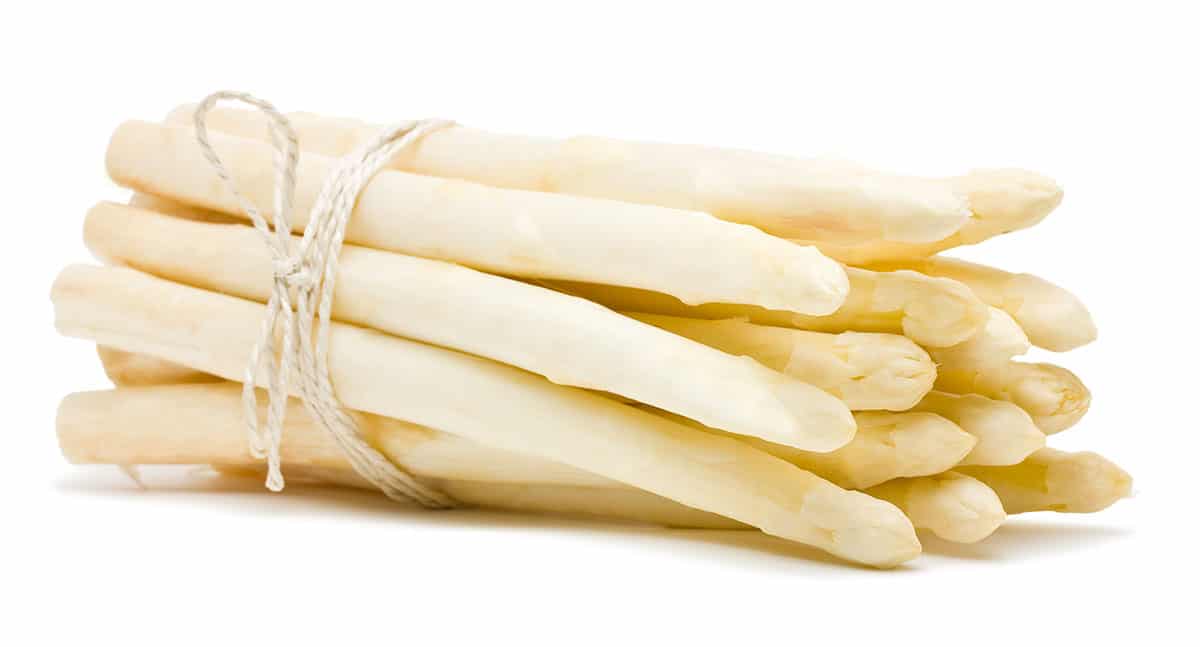
White Asparagus
White asparagus is grown by covering asparagus completely with soil so that they never see sunlight and begin to photosynthesize. This variety is more tender and less bitter than ordinary green asparagus. It is very popular in Germany where it is called Spargel. My parents lived in Germany for 6 years, and on my many visits we rarely ate asparagus as we like spargel so much better. It is wonderful in soups or just boiled and covered in Hollandaise sauce or your favorite veggie topping. For all things asparagus check out our Asparagus 101 Guide. Our favorite way to quickly cook any asparagus is to put it in a microwave safe dish with a bit of water, cover it in Saran Wrap, and microwave until tender.
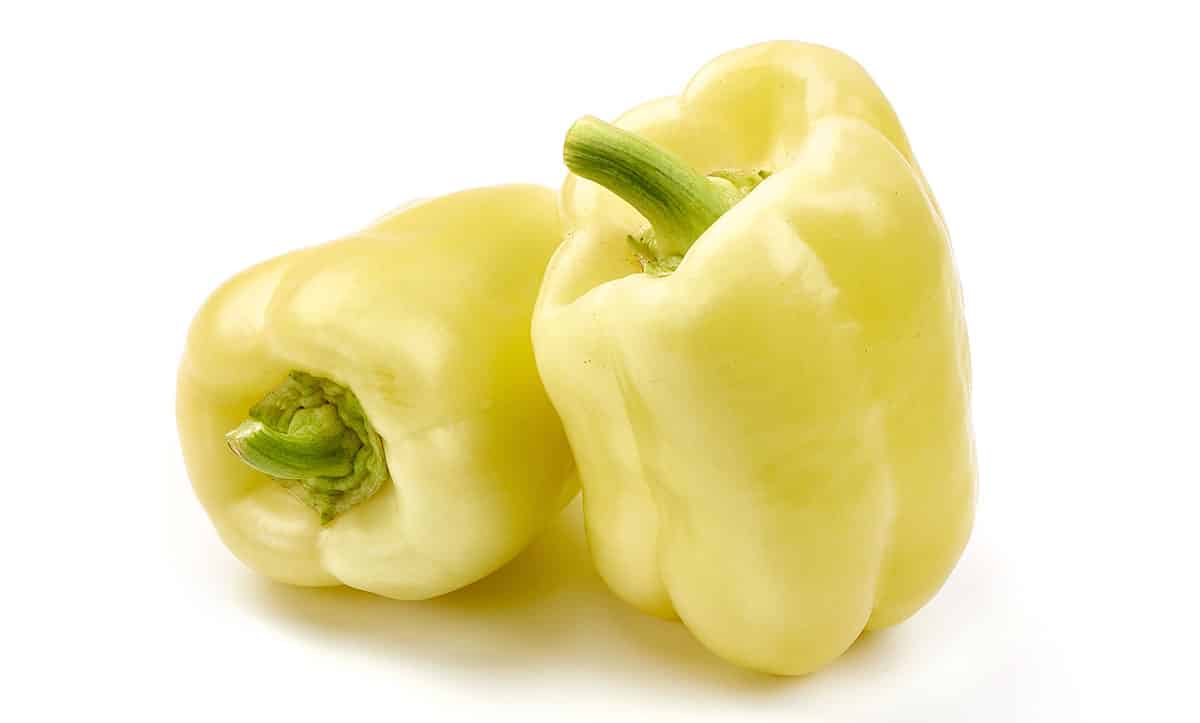
White Bell Pepper
Bell Peppers are the only peppers that score a zero on the Shiller Heat Unit scale. This simply means that they aren’t spicy at all. Still they are one of America’s favorites in all manner of cuisine. They are easiest to find in green, red, yellow and orange, but can also be white, purple, or brown. These other colors are just a bit harder to find. Try international markets, or consider growing your own this summer.
If you are looking for a new idea or two for using bell peppers, check out 14 of Our Favorite Bell Pepper Recipes. At Live Eat Learn we like to experiment with all the colors. Use as many colors as you can find in this Roasted Bell Peppers Recipe for a colorful and impressive display.
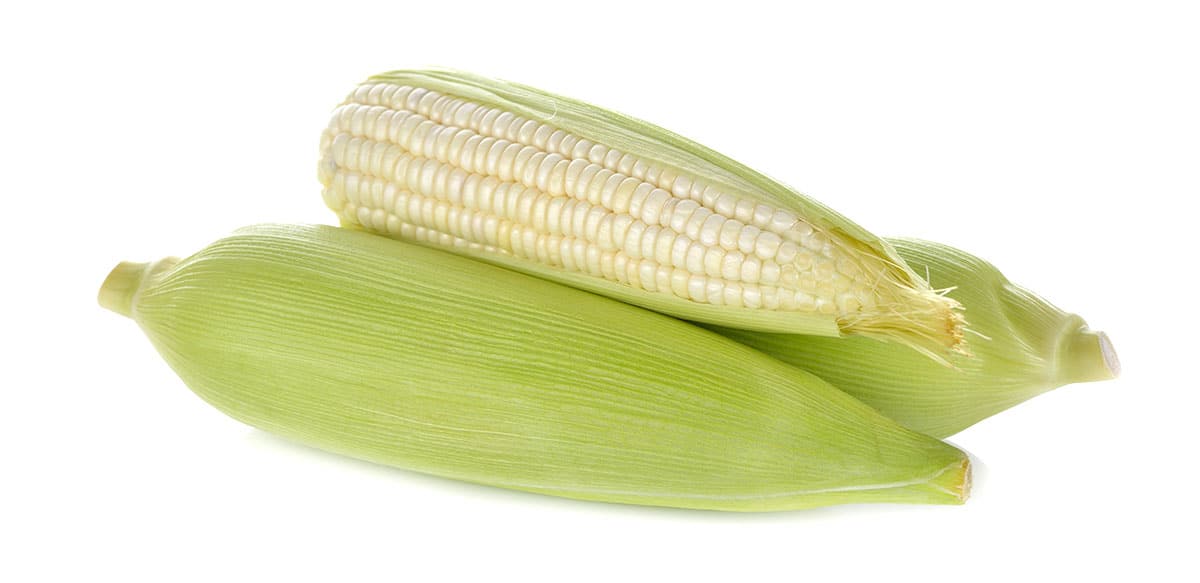
White Corn
There is really little difference between white corn and yellow sweet corn. The yellow corn is perhaps a bit more nutritious because it contains beta-carotene. This is the substance that gives sweet corn its yellow color and is used by the body to produce vitamin A. White corn does, however, give you some added opportunities for color variation in your cooking. Consider using white corn in dishes like this Mexican Street Corn Salad or our popular Zucchini Corn Salad with (not in replacement of) yellow sweet corn to produce a more colorful salad.
Trivia Answer
The Answer is D, white corn has the most protein!
- Parsnips 1.6 grams
- Mushrooms 3.1 grams
- Cauliflower 2.0 grams
- White Corn 3.2 grams
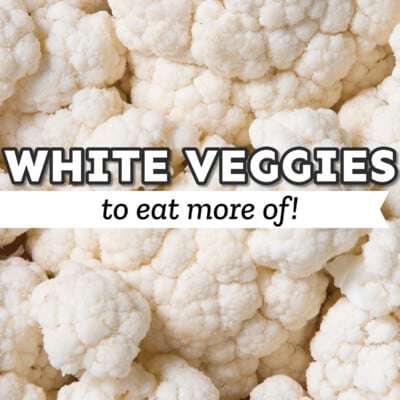
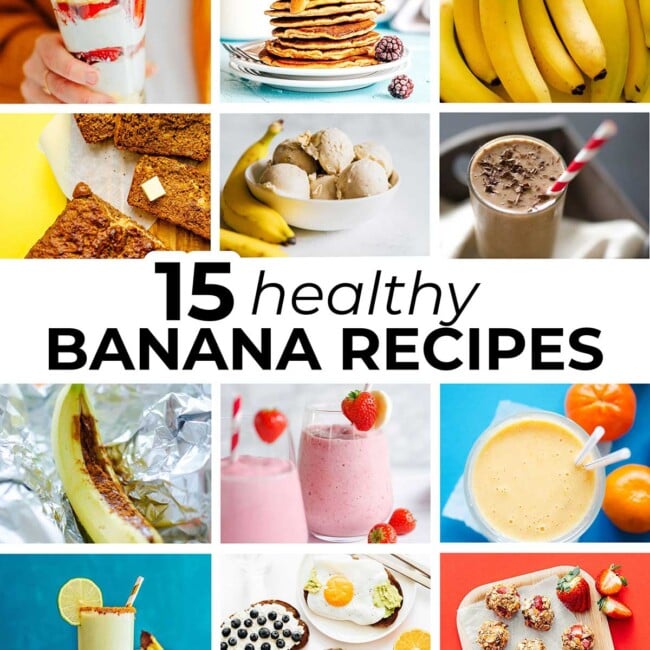
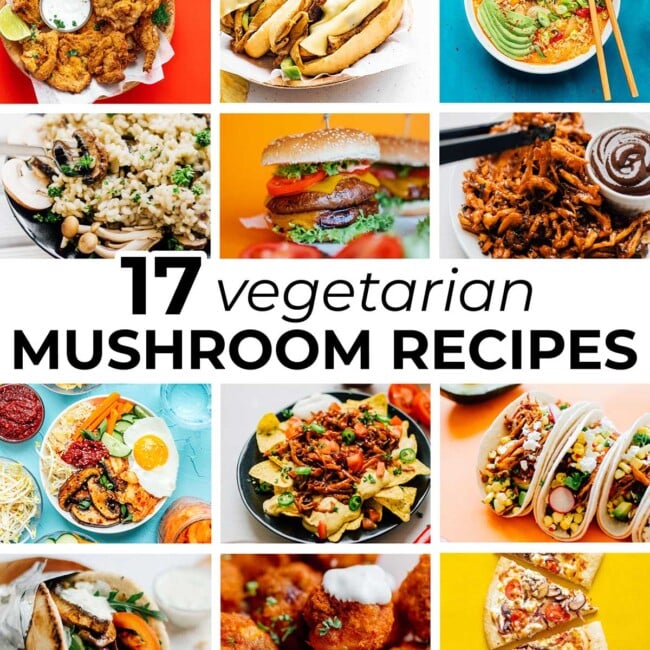
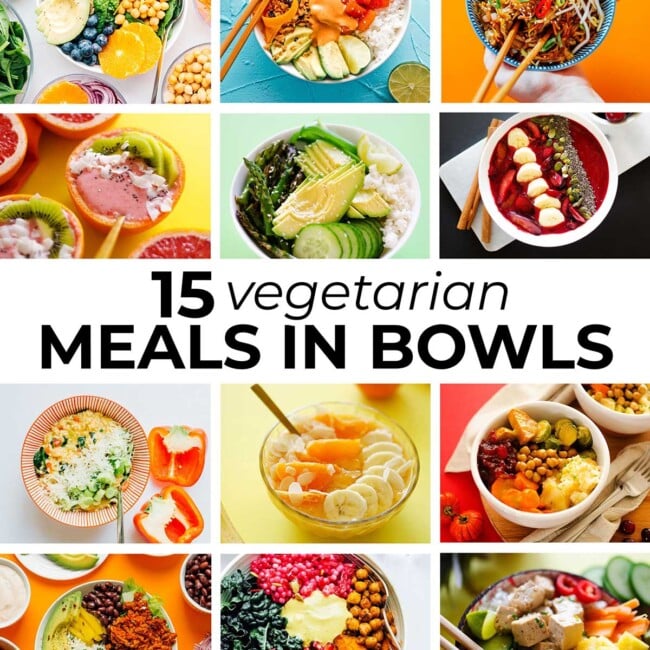
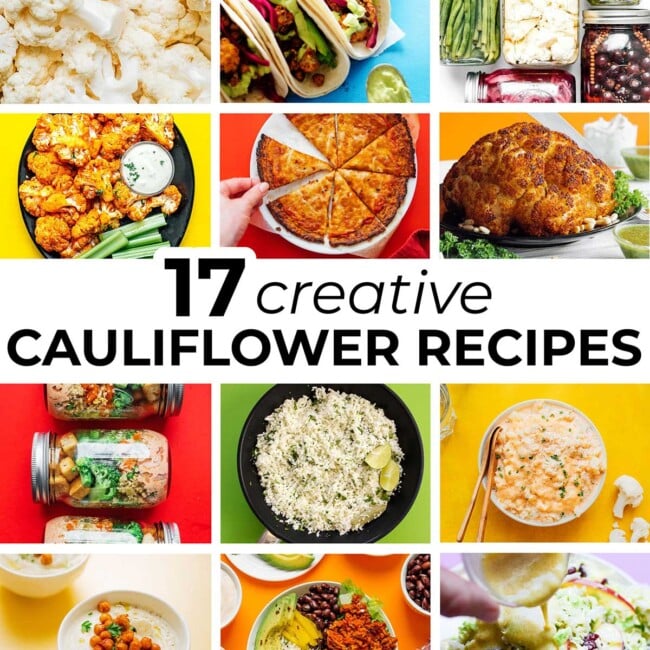
Leave a Comment